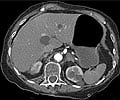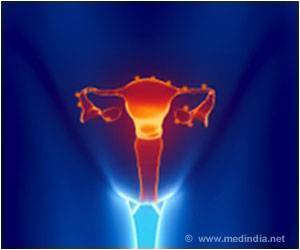Smoking during pregnancy is a 'double-edged sword' in respect of sudden infant death syndrome (SIDS) - as it not only does raise a mother's likelihood of having a preterm baby, but
Smoking during pregnancy is a 'double-edged sword' in respect of sudden infant death syndrome (SIDS) - as it not only does raise a mother's likelihood of having a preterm baby, but it also increases the infant's susceptibility to SIDS further, according to a new study.
The study found that smoking not only does raises a mother's likelihood of having a preterm baby, who is already among the most vulnerable to SIDS, but also increases the infant's susceptibility to SIDS even further.In the first-ever experimental study to compare the breathing reflexes of preemies of smokers versus non-smokers, researchers found that babies whose mothers had smoked showed a number of signs of impaired respiratory function.
"Smoking during pregnancy is a double-edged sword with respect to SIDS," said Shabih Hasan, M.D., a staff neonatologist and professor in the department of pediatrics at the University of Calgary, and the principal investigator of the new study.
"Not only does it raise a mother's likelihood of having a preterm baby, who is already among the most vulnerable to SIDS, but it increases the infant's susceptibility to SIDS even further," Hasan said.
The research will be published in the first issue for September of the American Thoracic Society's American Journal of Respiratory and Critical Care Medicine.
Studies have indicated that a combination of hypoxia (low oxygen) and hypercarbia (excess of carbon dioxide) may be acute precursors to SIDS.
Advertisement
"Preterm babies are known to have increased breathing difficulties in proportion to their prematurity and cigarette smoke is known to increase apneas in full-term babies," said Dr. Hasan.
Advertisement
To analyze the effects of cigarette smoke exposure on preterm infants' respiratory health and their risk of SIDS, the researchers recruited 22 preterm infants who had been spontaneously born between 28 and 32 weeks with no other complicating respiratory factors. Twelve of the infants had mothers who had smoked five or more cigarettes every day in pregnancy. The mothers of the other ten infants did not smoke during pregnancy.
They obtained baseline readings on the infants' breathing patterns in normal conditions, assessing breathing rate, pauses in breathing, recovery period and heart rate. Saturation of oxygen in their blood was also monitored. After baseline readings were recorded, the infants were challenged with a five-minute period of decreased oxygen delivered through a nasal cannula. During this period they were monitored very closely with infant resuscitation equipment near at hand.
The two groups were remarkably similar in some measures: respiratory rates and number of breathing pauses were similar among both groups of infants. But there were significant differences between the two groups of preterm babies with respect to heart rate and recovery period. The cigarette-smoke exposed infants showed increased heart rate during the hypoxemic period compared with their baseline values, but there was no difference in heart rates was observed in control infants, indicating that the oxygen depletion put their bodies under more stress than the control groups.
Furthermore, while blood oxygen levels decreased similarly in both groups during the hypoxemic challenge, infants who were exposed to cigarette smoke did not recover as well, as quickly or as often as the infants born to non-smoking mothers.
Source-ANI
SRM















